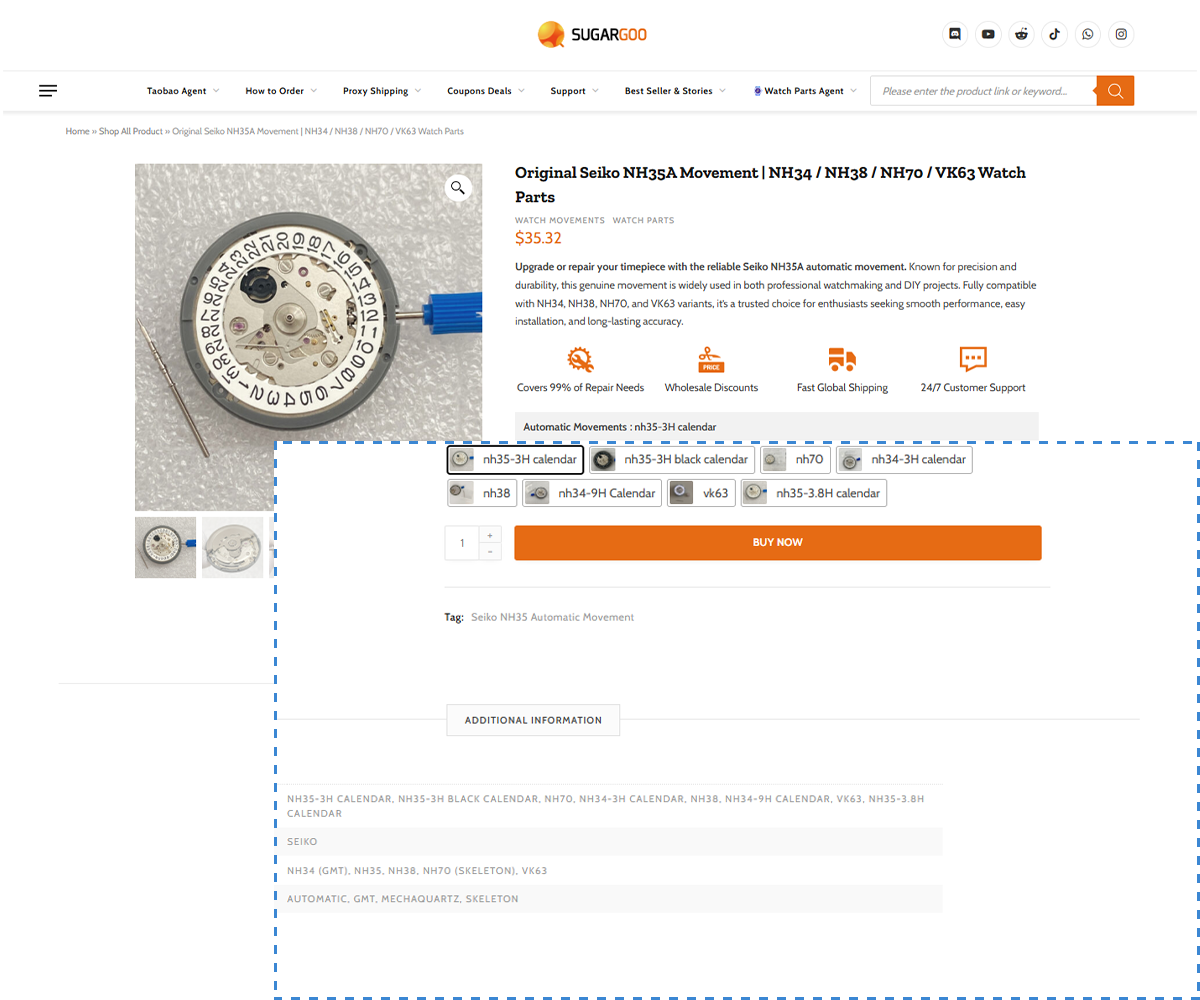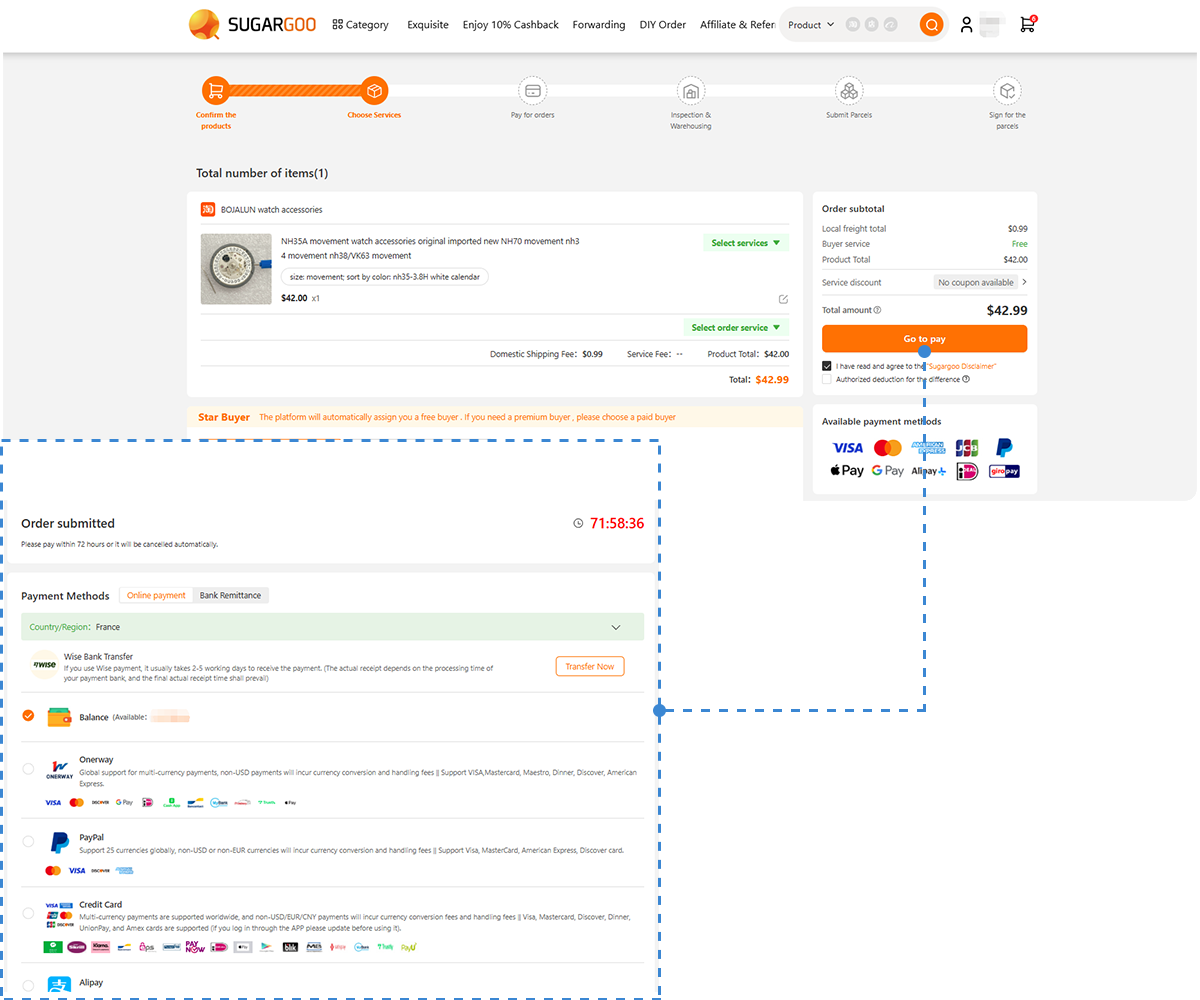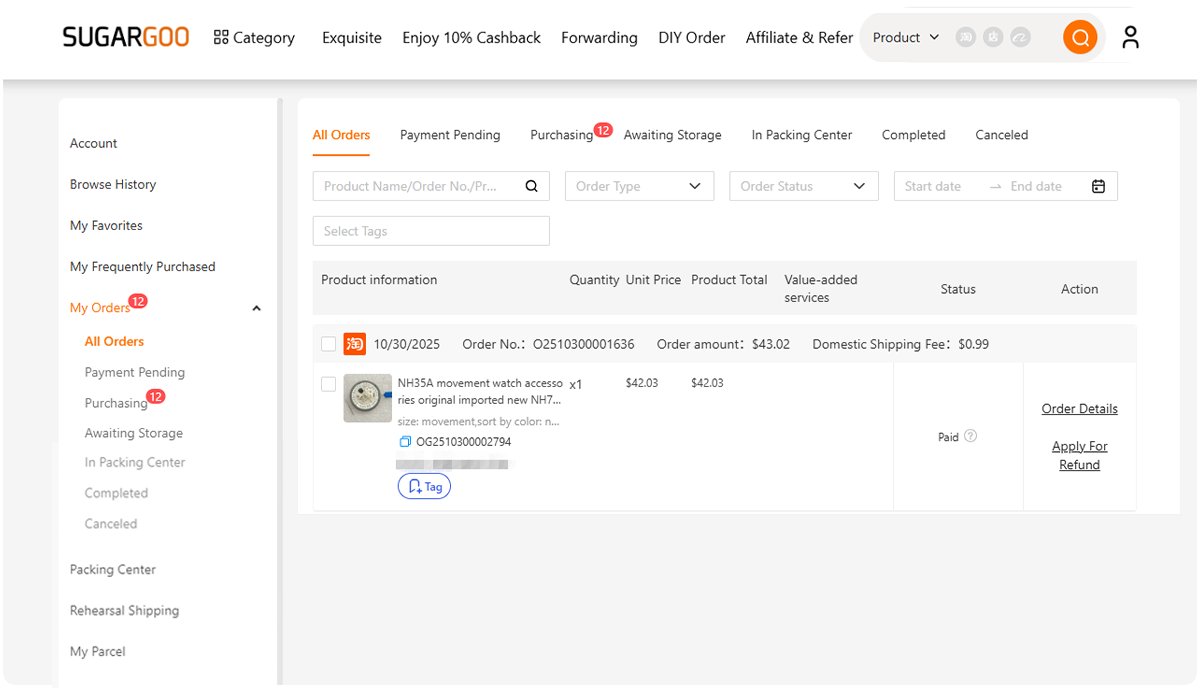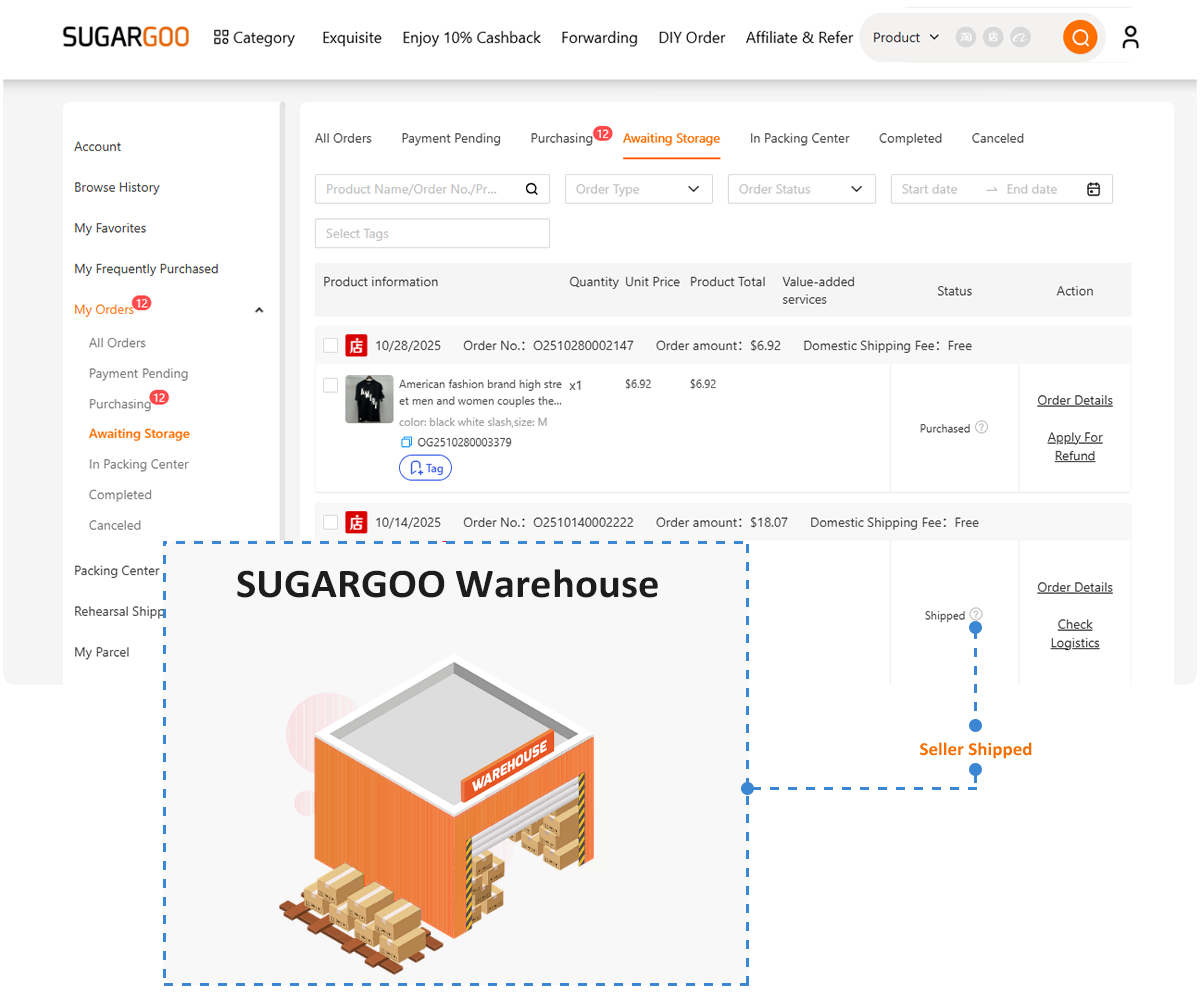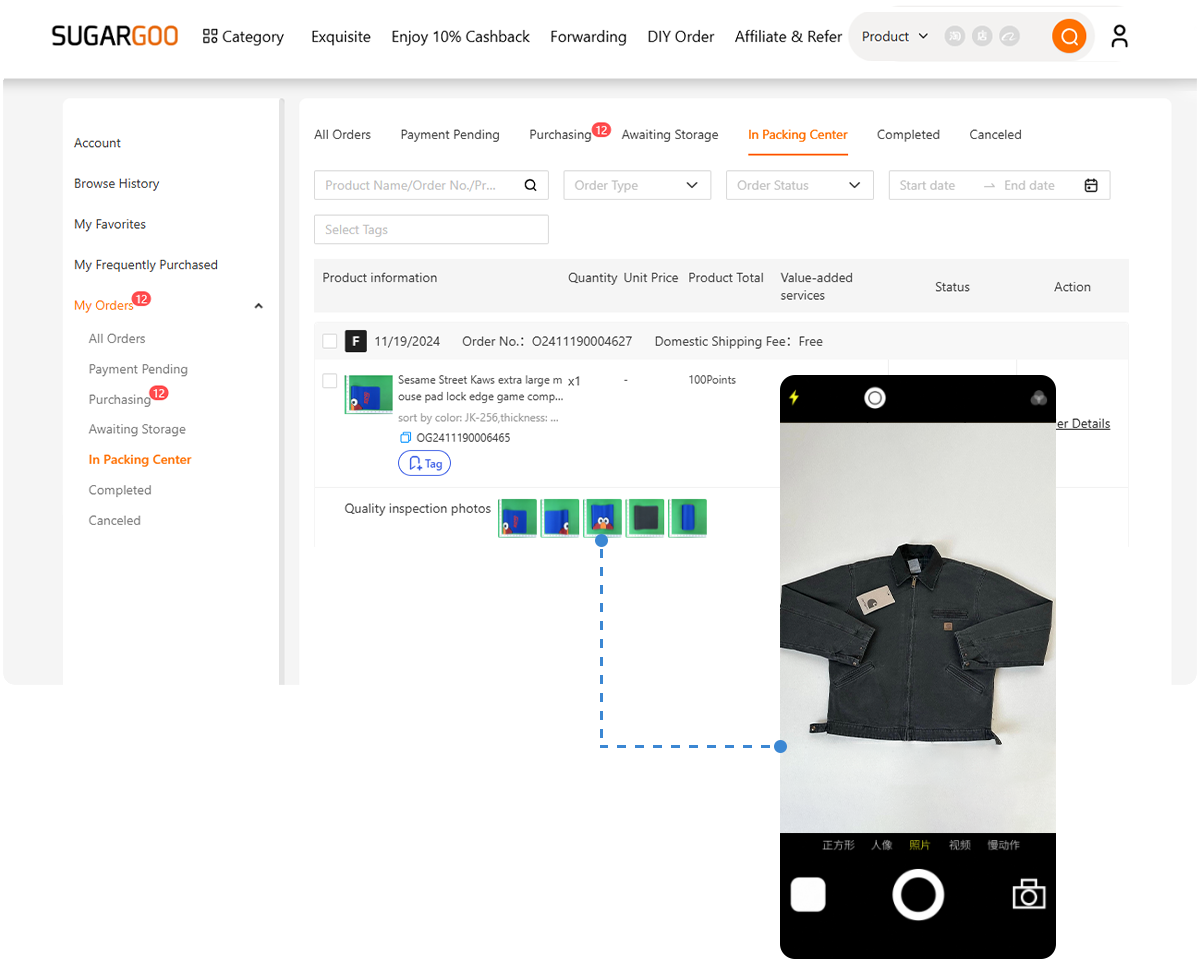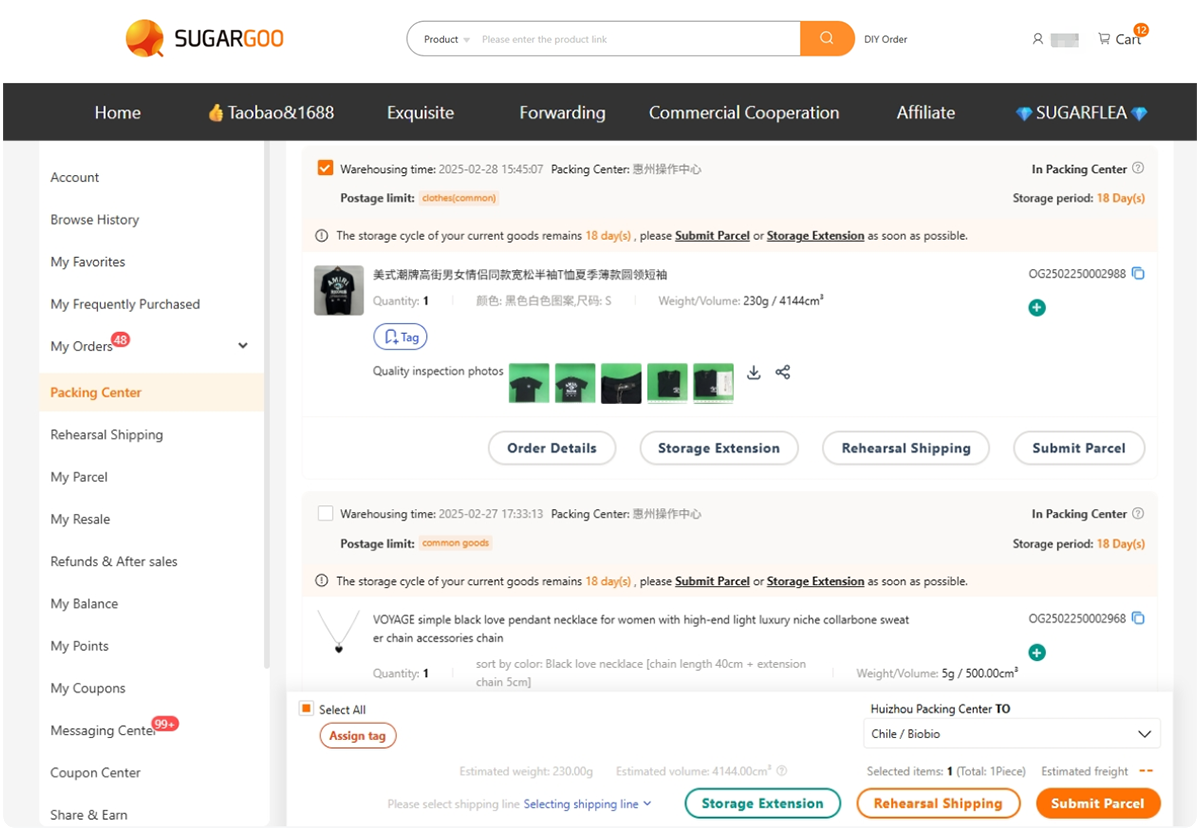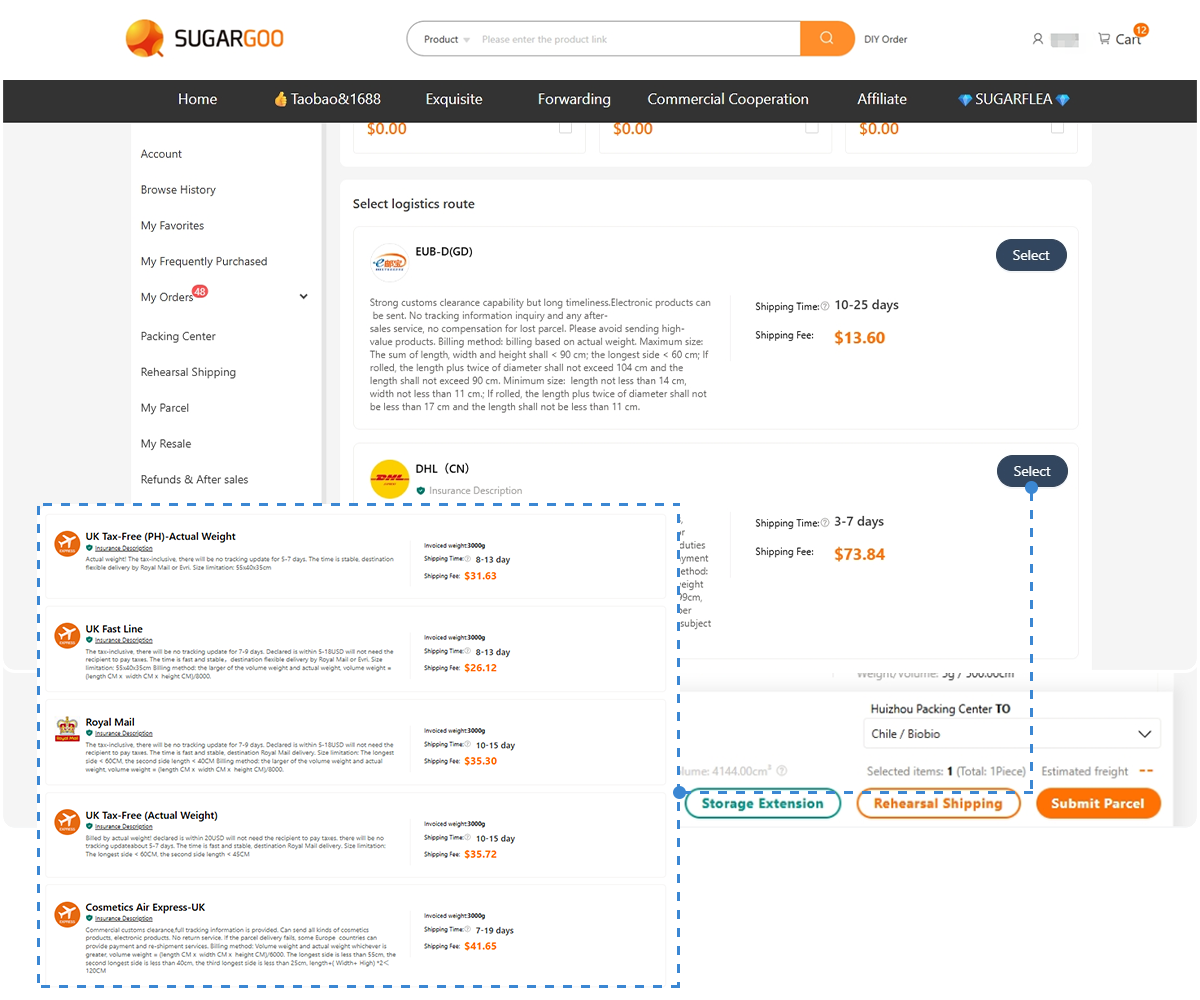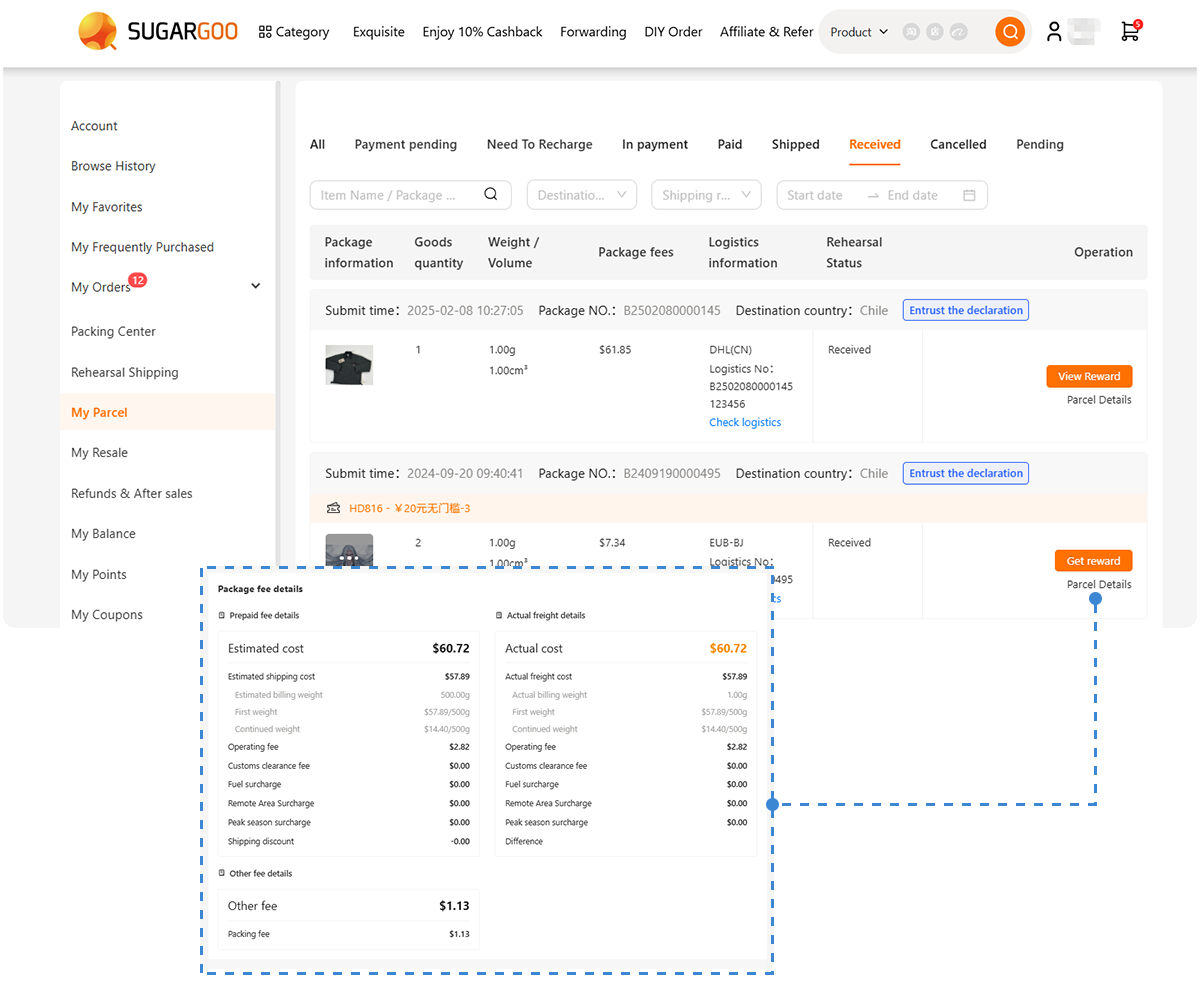If you’ve ever opened your watch case for a mod or repair, you’ve probably stared at the metal engine inside and asked yourself: “What movement is this, exactly?”
That question matters more than you think. Because every dial, hand, crown, and even case you buy depends on one thing — knowing your movement model.
Misidentify it, and you end up with the wrong dial feet, hands that don’t fit, or a crown that’s half a millimeter too long. Identify it correctly, and suddenly your watch modding life becomes effortless.
This guide will teach you how to identify your watch movement model step-by-step, whether it’s a Seiko NH35, an ETA 2824, a Miyota 9015, or even a Chinese ST36 clone.
1. What Is a Watch Movement (and Why Model Numbers Matter)
A movement, or caliber, is the engine of your watch. It controls every function: timekeeping, date change, winding, and power reserve.
But unlike brand names, movements are universal — the same NH35 used in a Seiko dive watch could be sitting inside a microbrand or custom mod. That’s why modders and collectors rely on the caliber number, not the brand name.
Knowing your movement model helps you:
- Find compatible dials, hands, and cases
- Order the right replacement parts
- Understand beat rate and hand height
- Troubleshoot timing or oiling issues
- Increase resale and repair accuracy
In short: your movement model is your watch’s DNA.
2. Where to Find the Movement Number
Let’s start with the basics — you don’t need fancy tools to identify a movement.
Here’s where to look:
| Watch Type | Location of Caliber Number | Example |
|---|---|---|
| Automatic (Seiko NH, Miyota, ETA) | Engraved on the movement plate (near balance or rotor) | “NH35A”, “8215”, “2824-2”, “SW200” |
| Quartz (battery) | Printed near the battery or coil | “VD78”, “6P29”, “Miyota 2035” |
| Manual Wind | Under balance wheel or bridge | “ST36”, “Unitas 6497” |
| Chronograph | Near pusher gears or rotor | “VK63”, “7750”, “NE88” |
To see it:
- Open your case back (see How to Use a Watch Case Opener Without Scratching)
- Rotate the rotor if automatic — the engraving might hide underneath.
- Use a loupe to read the marking (sometimes laser-etched).
💡 Pro tip: On Seiko NH35/NH36 movements, the marking is usually visible beside the balance wheel — “NH35A” is the most common build used in modern mods.
If there’s no visible engraving, check the dial side — some factory builds hide the code underneath.
3. Quick Guide: Major Movement Families and Their Traits
You can identify most movements by these visible signs — even before opening the case.
| Movement Family | Beat Rate | Seconds Hand Sweep | Key Traits | Typical Watches |
|---|---|---|---|---|
| Seiko NH35/NH36 | 21,600 bph | Smooth (6 beats/sec) | Reliable, hacking, hand-winding | Seiko 5, SKX mods |
| Miyota 8215/9015 | 21,600 / 28,800 bph | Slight stutter on 8215 | Thin profile, no noise | Citizen, microbrands |
| ETA 2824 / Sellita SW200 | 28,800 bph | Very smooth | Swiss accuracy, interchangeable | Tissot, Longines, mods |
| ST36 / Sea-Gull | 18,000 bph | Slower, visible tick | Manual wind, vintage look | Custom hand-wind mods |
| Quartz (VD78, Miyota 2035) | 32,768 Hz | One tick/sec | Battery powered | Most affordable watches |
So if you see a smooth sweep but slightly slower than Swiss, you’re likely holding a Seiko NH series movement.
4. NH35 vs NH36: The Modder’s Dilemma
These two Seiko calibers are the most popular among modders — and often confused.
| Feature | NH35 | NH36 |
|---|---|---|
| Date Display | Date only | Day + Date |
| Dial Feet | Same positions | Same |
| Thickness | 5.32mm | 5.32mm |
| Stem Compatibility | Shared | Shared |
| Hands Fit | Same (hour 1.50mm, minute 0.90mm, seconds 0.25mm) | Same |
The only real difference? NH36 adds a day wheel.
So if your dial has both day and date windows, it’s an NH36. If only date — NH35.
NH35 movements and dials are easy to find on Sugargoo’s Watch Movements page — complete with photos and specifications.
5. ETA vs Sellita: Spotting the Swiss Twins
If you’ve ever opened a Swiss-made watch and found “SW200,” don’t panic — it’s not fake, it’s Sellita’s version of ETA 2824.
They’re almost identical mechanically, but look closer:
| Feature | ETA 2824-2 | Sellita SW200-1 |
|---|---|---|
| Jewels | 25 | 26 |
| Marking | “ETA 2824-2” engraved near balance | “SW200” engraved near crown wheel |
| Rotor Shape | Cutout with ETA logo | Smooth round edge |
| Interchangeable Parts | 95% identical | Fully interchangeable |
In fact, many microbrands now use Sellita SW200 because ETA restricts parts sales.
If your movement looks Swiss, has 26 jewels, and the engraving starts with “SW,” you’re looking at a Sellita.
6. Miyota vs Seiko: How to Tell the Difference
Miyota and Seiko NH series are both reliable, affordable automatic movements, but visually they differ a lot.
| Feature | Seiko NH35 | Miyota 8215 / 9015 |
|---|---|---|
| Rotor Direction | Bidirectional winding | Unidirectional (free spins) |
| Balance Wheel Position | Near 7 o’clock | Near 5 o’clock |
| Hacking Seconds | Yes | No (8215) |
| Rotor Noise | Quiet | Audible whir when shaken |
| Date Wheel Font | Bold | Narrow, thinner |
| Marking | “NH35A” | “8215” or “9015” near balance |
So if your watch rattles loudly when you move it — congratulations, it’s likely a Miyota 8215!
Miyota 9015, however, runs smoother at 28,800 bph and is popular in thin microbrand builds.
7. Chinese Movements (ST Series) and How to Identify Them
Chinese movements often power affordable skeleton or hand-wind watches.
The ST36 (Sea-Gull 6497 clone) is the most common. It’s a large, manual wind movement recognizable by:
- Wide open bridges
- Large visible balance wheel at 9 o’clock
- Manual winding crown only (no rotor)
- “ST36” engraved near the keyless works
Other variants include ST25 (automatic), ST19 (chronograph), and DG2813 (low-cost automatic).
You can find ST36-compatible dials and hands under Chinese ST-Series Movements on Sugargoo.
8. Visual ID Chart: Engravings and Layout Clues
| Engraving | Movement Family | Power Type | Notes |
|---|---|---|---|
| NH35A / NH36A | Seiko | Automatic | Most common mod base |
| 8215 / 9015 | Miyota | Automatic | Unidirectional rotor spin |
| 2824-2 / 2836 | ETA | Automatic | Swiss high-beat |
| SW200 / SW300 | Sellita | Automatic | ETA-compatible |
| ST36 | Sea-Gull | Manual | Visible large balance |
| VD78 / 2035 | Quartz | Battery | Step-second hand |
If the rotor is unmarked, look for jewel count and regulator shape. NH35 = 24 jewels, Miyota 8215 = 21 jewels.
9. Common Misidentifications (and How to Avoid Them)
Even pros get tripped up sometimes. Here’s what usually goes wrong:
| Mistake | Why It Happens | How to Avoid |
|---|---|---|
| Assuming all Seikos use NH35 | Many older ones use 7S26 | Check for hand-winding feature |
| Thinking “SW200” = fake ETA | It’s Sellita’s licensed clone | Confirm jewel count |
| Buying NH35 dial for Miyota | Dial feet positions differ | Always check diagram |
| Assuming all NH movements are 21,600 bph | NH38, NH39 have variations | Check technical sheet |
| Using wrong crown stem length | Movement height differs | Measure stem at keyless point |
💡 Remember: even a 0.3mm misfit can make your hands drag or your crown misalign.
10. Identify Without Opening the Case (Clues from Behavior)
Sometimes you can’t open your watch — maybe it’s under warranty, or you lack tools. Here’s how to guess the movement from the outside:
| Clue | Likely Movement |
|---|---|
| Seconds hand sweeps smoothly but not high-beat | Seiko NH35 |
| Audible rotor spin, visible stutter | Miyota 8215 |
| Smooth 8-tick sweep, silent rotor | ETA / Sellita |
| No sweeping seconds (one tick/sec) | Quartz movement |
| Manual winding only, visible balance | ST36 / Unitas |
Combine behavior with crown feel — hacking, winding tension, and hand smoothness are strong hints.
11. Matching Movements to Parts (for Modding or Repair)
Once you’ve identified your movement, the next step is knowing what fits. This is where modders get creative.
| Movement | Compatible Parts | Cautions |
|---|---|---|
| NH35 / NH36 | Seiko SKX dials, crowns, cases | Check dial feet and stem height |
| Miyota 9015 | Slim cases, sapphire crystals | Not interchangeable with NH35 parts |
| ETA 2824 / SW200 | Swiss mod kits, crowns, cases | Dial ring required for conversions |
| ST36 | 44–47mm manual cases | Check stem alignment |
| Quartz (VD78, 2035) | Generic cases | Stem fit differs by brand |
All of these can be sourced easily via Sugargoo’s Watch Movements Collection — they’re categorized by series (Seiko, Miyota, ETA, ST).
12. Advanced: Reading the Movement Architecture
Each movement has a signature layout — just like car engines have cylinder patterns.
| Component | Clue |
|---|---|
| Balance Wheel Position | Seiko = lower-left; Miyota = right side |
| Regulator Type | Etachron (Swiss) vs Tri-Wing (Seiko) |
| Rotor Cutout | ETA = semi-skeleton; Seiko = solid |
| Bridge Shape | Seiko = three-quarter plate; Miyota = cross-bridge |
| Shock Protection | Seiko = Diashock; Swiss = Incabloc |
Learning to recognize these makes identification intuitive — even at a glance.
13. If You’re Still Unsure — Use These Resources
Take a clear macro photo of the movement and rotor.
- Search the engraving code + “movement” in Google Images.
- Compare side-by-side on forums like Watchuseek, Reddit’s r/SeikoMods, or The Watch Site.
- Post your photo in Sugargoo’s modder community group — most NH or ETA users can ID it instantly.
Sugargoo also provides movement verification photos before shipping, so you always know what caliber you’re buying.
14. Where to Buy Verified Movements and Parts
You can find genuine and aftermarket movements at Sugargoo Watch Parts & Movements, with QC pictures and shipping consolidation.
Shop by category:
Each page lists compatible dials, hands, cases, and recommended repair tools — ideal for modders and hobbyists.
15. Final Thoughts: Know Your Core Before You Create
The dial may tell time, but the movement defines it.
Every great watch build starts with the right identification — the right rhythm, height, and fit. Whether it’s a reliable Seiko NH35 or a refined ETA 2824, the more you understand what beats inside your case, the better your craftsmanship becomes.
Because true modding isn’t just swapping parts — it’s knowing your heart before you build it.



